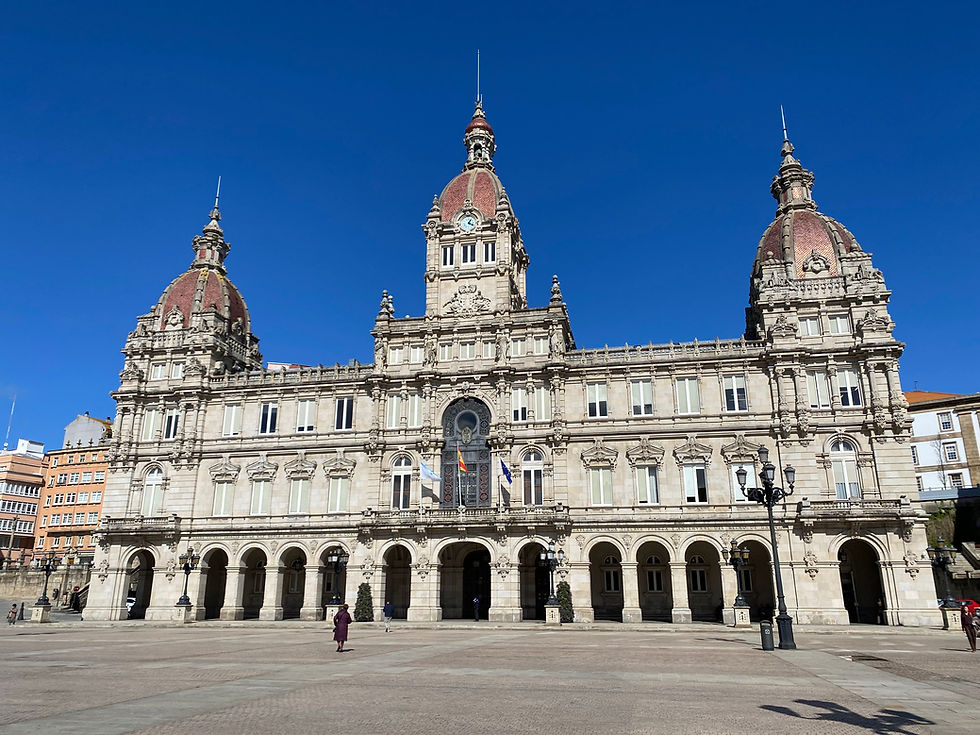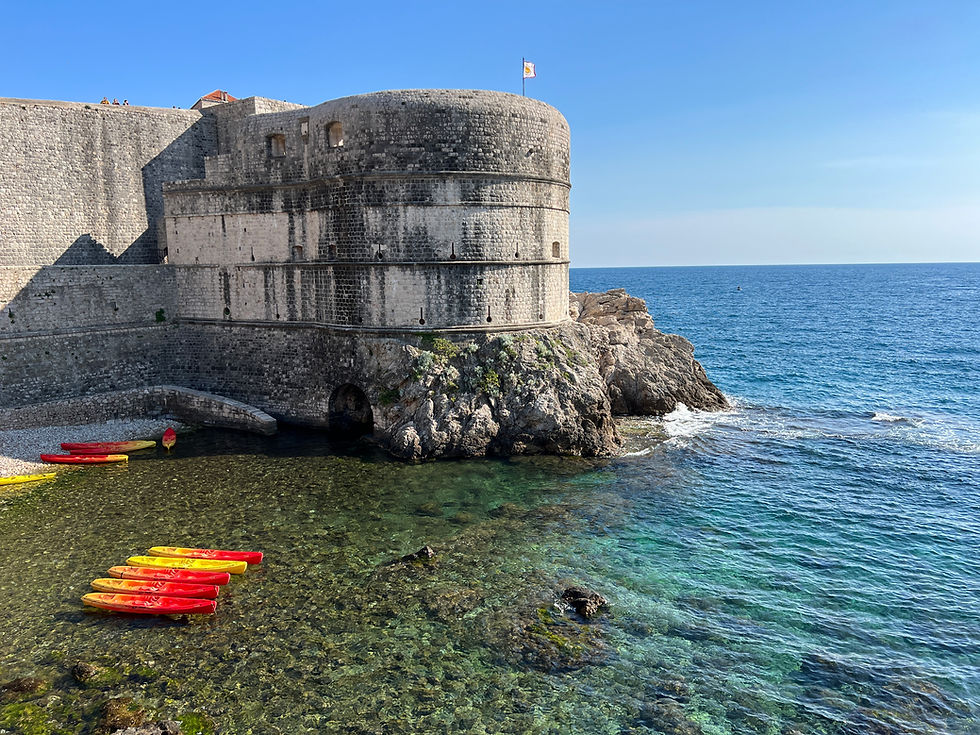A Coruña Travel Guide: Tower of Hercules, Avenida da Mariña & Historic Center
- Will Gerson
- Aug 23
- 2 min read
Updated: Nov 20
The charming city of A Coruña, in Spain’s far northwest, is one of the major cities of Galicia, which existed as an independent kingdom with its own language and culture for nearly a thousand years. Although it has long since been incorporated into the Spanish nation, Galicia still maintains a distinct identity, which can be felt strongly here. Read on for a guide to exploring A Coruña.

Avenida da Mariña
A Coruña is affectionately known as A Cidade de Cristal (the City of Glass), and a stroll down this avenue along the city’s old port will show you why. These amazing glass galleries were built in the late 19th century as a natural adaptation to Galicia’s wet oceanic climate. The galleries protect the building’s interiors from rain while still allowing for ventilation; they also help to trap in heat in the winter and attract a cool breeze in the summer.

On the ground floor, the buildings have covered arcades that could be used to store boats and small ships on stormy days. After all, this was the neighborhood of A Pescaría, the Fishermen’s Quarter. Galicians have always been a seafaring people, and this neighborhood perfectly symbolizes their connection to the Atlantic.
Praza de María Pita
A Coruña’s main square is dedicated to María Pita, the local heroine who helped defend the humble fishing village from an attempted siege by the English Armada in 1589. The plaza is dominated by the tremendous Palacio Municipal, built in the early 20th century, which serves as the city hall. The other three sides of the square have covered arcades with small bars and cafes, which make for a great spot for a drink and a bite to eat on a sunny day.

Torre de Hércules
Since the late 1st century AD, the Tower of Hercules has guided ships along the treacherous Galician coast into the safety of the Ría da Coruña, a protected inlet off the Atlantic. Located on a rocky promontory at the city’s northernmost point, the lighthouse was built by the Romans and is the world’s oldest lighthouse still in use today.

The lower two-thirds of the lighthouse are part of the original Roman construction, known as the Farum Brigantium, while the upper third was added during an 18th-century restoration, which faithfully preserved the integrity of the Roman masonry while updating its functionality to modern times.

The lighthouse is an emblem of the city and is well worth a visit to appreciate its remarkable construction as well as its beautiful, sweeping views of the coast.
Beaches
The city has two fabulous beaches on its large cove right in the center of the city. The Praia de Riazor and the Praia do Orzán are in reality the same stretch of sand along the cove, just divided in two. For food close by, try Bar Barbería just a couple of blocks from Orzán.

Looking for more places to explore in the region? Visit our Galicia page here.



